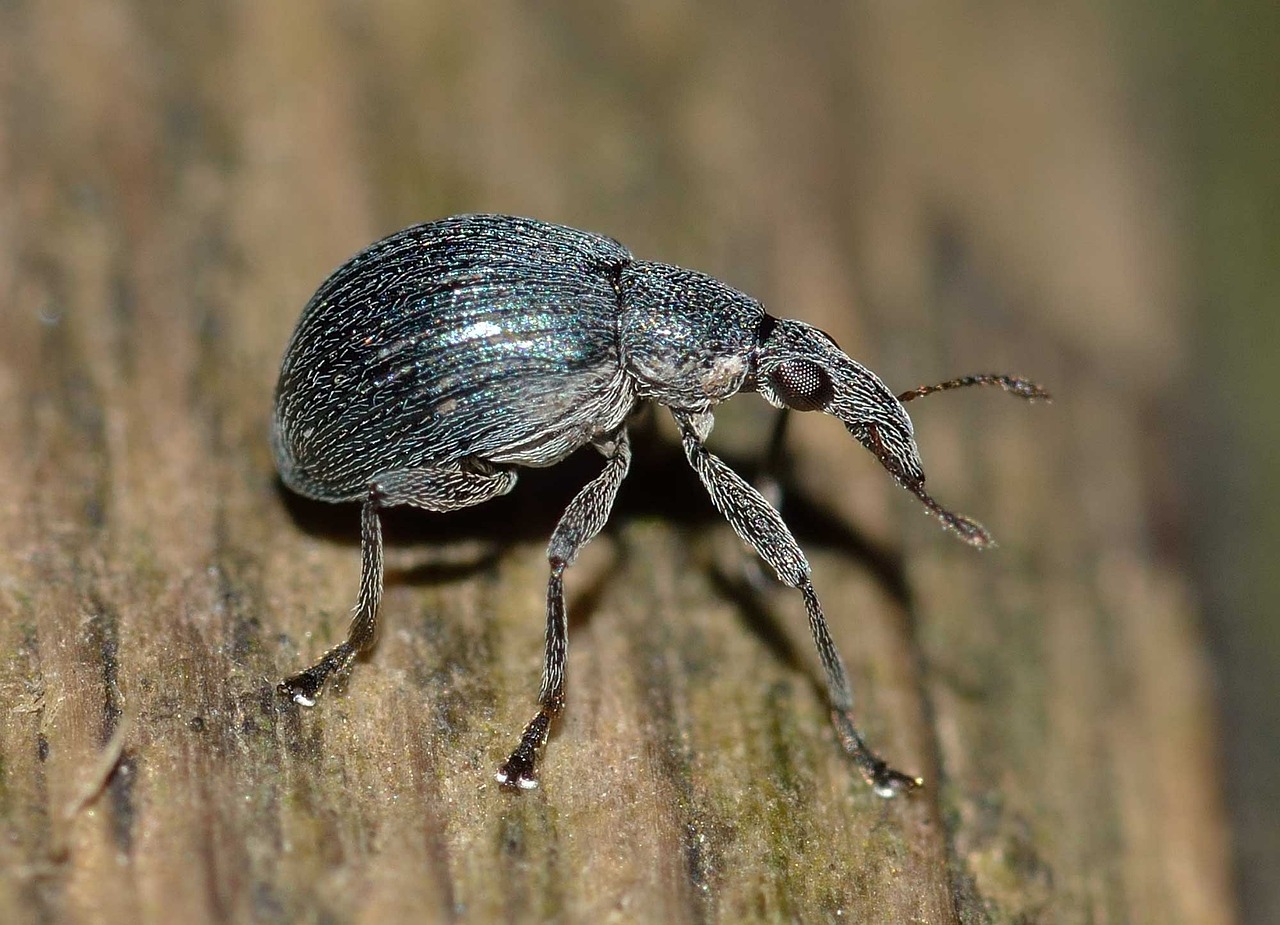Pantry pests like to eat the same foods that humans do, and finding an infestation of pests in items such as cereals, flour, grains, baking mixes, crackers, pasta, dried fruit, spices and other dry goods is not uncommon. Often several different stages of the pests’ life cycles may be present in the infestation, with adults, eggs and larvae present. The first indication of an infestation is typically the appearance of small moths in the kitchen, or the presence of beetles or larvae in dry foods.
Meal Moth
The Indian meal moth is the most common food pest that is found in the home. Meal moth larvae feed on dry goods such as cereals, flours, rice, dried fruit and vegetables, and candies and chocolate. An infestation with meal moth larvae is characterized by the appearance of silken threads that are left behind by the larvae as they eat and move through food supplies. The adult moth is small, with reddish-brown wings and a whitish-grey body.
Warehouse Beetle
The warehouse beetle feeds on cereal, cocoa, flours, nuts, dried starchy vegetables, spices, candy, and pet foods. Adult beetles are approximately one eighth of an inch long, with a dark brown oval body. Larvae are around one quarter inch long, with stiff hairs on the abdomen. Ingestion of these hairs can cause irritation to the mouth and digestive tract.
Merchant Grain Beetle and Saw-toothed Grain Beetle
Both of these beetles are around one tenth of an inch long, with tiny projections that resemble saw teeth on their thoraxes. In both the adult and larval stages, these beetles feed on grains, flours and meals, as well as cereals, nuts and dried fruit.
Red Flour Beetle and Confused Flour Beetle
In the adult stages both of these beetles are around one seventh of an inch long, with shiny reddish-brown oval bodies. They feed on cereals, grains, flours, dried fruits, herbs, and nut meats.
Drugstore Beetle and Cigarette Beetle
These species are both one eighth of an inch long in the adult stage, with light brown bodies. The cigarette beetle is more common than the drugstore beetle.
The cigarette beetle preferentially feeds on cigarettes, cigars and tobacco, but will also feed on spices and dried herbs, nuts, cereals, fruits and seeds. The drugstore beetle feeds on a very wide variety of foods, but is most commonly found in cereals, pet foods and drugs.
Weevils
Granary, rice and bean weevils are not commonly found in the home; these species tend to be found more often in warehouses and granaries. However, if infested food is brought into the home they may infest other food products. Weevils tend to be slightly larger than beetles, and have long protruding snouts. Granary and rice weevils feed most often on whole grains, while bean weevils feed on legumes such as beans and peas.
Treating and Preventing Infestations
The damage done by pantry pests is caused via contamination with pest by-products such as excrement, webbing, and hairs. Food that is contaminated should never be eaten.
Pantry pests thrive in our homes because we supply them with both food and warmth. The key to preventing infestations of pantry pests is preventing access to their food sources. However, completely eliminating an infestation may take several months, because some pests are able to survive extended periods without food.
The first step in eliminating an infestation is locating its source. If you notice moths or beetles in the kitchen, locate the source or sources and remove them from your kitchen immediately. If the infestation is small-limited to one or two food packages-controlling it is usually as simple as sealing and discarding the packages.
However, if you have several sources of infestation, control may be more difficult. All packages of dry food, including unopened ones, should be inspected carefully for the presence of larvae or adult beetles. Any packages with signs of infestation such as tiny holes or the presence of webbing should be discarded.
If the infestation is fairly widespread, it is best to remove all packages and scrub kitchen shelves with soap and water, paying special attention to cracks and crevices to remove all larvae and unhatched eggs.
Finally, practice good hygiene in the kitchen to prevent re-infestation.
- Seal all dry foods in airtight containers with well-fitting lids, such as screw-top jars or plastic containers with tight lids
- Clean shelves and other surfaces regularly
- Purchase foods in smaller packages (rather than in large bulk packages) if they are foods you do not use regularly
- Do not mix old and new supplies of foods
- Wash containers before restocking with new supplies
- Do not buy any foods contained in damaged packages
- Keep shelves dry to discourage pests
The Author:
Stephanie Larkin is a freelance writer who writes about issues pertaining to house maintenance including Exterminator | Pest Control
